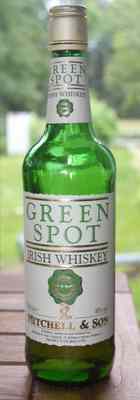|
|
Release Notes
A fabulous pure potstill whiskey, exalted by connoisseurs as one of the finest Irish whiskeys available. Vibrant and very characterful, Green Spot must be tried by serious fans of Irish Whiskey.
The Whisky Exchange
3rd Party Tasting Notes
Nose: Mouthwatering and fresh on one level, honey and menthol on another
Taste: Crisp, mouthwatering with a fabulous honey burst, alarmingly sensuous
Finish: Faint coffee intertwines with the pot still. The thumbprint thread of honey remains but a touch more caramel than yore.
Balance: This honeyed state has remained a few years and it's sharpness has now been regained. Complex throughout. Unquestionably one of the world's greatest branded whiskies.
Rating: 93
Taste: Crisp, mouthwatering with a fabulous honey burst, alarmingly sensuous
Finish: Faint coffee intertwines with the pot still. The thumbprint thread of honey remains but a touch more caramel than yore.
Balance: This honeyed state has remained a few years and it's sharpness has now been regained. Complex throughout. Unquestionably one of the world's greatest branded whiskies.
Rating: 93
Jim Murray, Whisky Bible 2010
The Brand: Green Spot
| Established: 1920 |
| Silent since: False |
| Address: |
| → website |
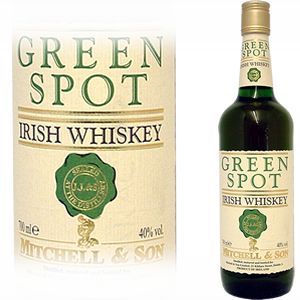
"Richard Burrows and I were both a lot younger back then," says Jonathan Mitchell. "I told him it would be foolish to let all the bonder brands die, because once they were gone, that was it!" Irish distillers had a change of heart - no doubt they realised that some of the more famous bonded labels, like Redbreast and Green Spot, were valuable assets in themselves.
"Irish Distillers bought Green Spot from us," says Jonathan. "It was the only way we were going to keep the brand alive. They matured the stock in Midleton, but we have the sole rights to sell, market and develop the whiskey." Green Spot is currently a vatting of seven to twelve-year-old pot still whiskeys. No more than 200 six-bottle cases are produced each year. Outside of Dublin"s Kildare Street, finding a bottle of Green Spot isn"t easy, but that"s half the fun. When you do stumble across it, grab it with both hands and only let go to pour yourself a large measure."
Only 500 cases are made each year, all for the home market, with most of this sold through Mitchell"s shop at 21, Kildare Street, Dublin. Those 6000 bottles represent a very small part of the total Mitchell operation. But for a seventh generation family company which dates back to 1805, it is one they cherish as a vital part of their own history and Ireland"s whiskey heritage.
The following is taken from "The Whiskeys of Ireland." Published by O"Brien Press, and written by Peter Mulryan.
The brand was originally known as Pat Whiskey, with a man looking very much the worse for wear apparently bursting through the label. Behind him was dark green shading. From this image grew the name Green Spot. The popularity of this type of whiskey spread to a seven year old Blue Spot, a Yellow Spot (12) and Red Spot (15).
As the costs involved in maturing expensive sherry casks became heavier and heavier, Mitchells reverted to vatting just the single and the original Green version. However, when Jameson switched production from Bow Street to Johns Lane, the make-up of the whiskey altered for the first time in living memory. Mitchell"s maturing stocks were running low, and having no intention of losing their famous brand, the company entered into an agreement with Irish Distillers to produce the whiskey. A stipulation was that the whiskey supplied had to be matured in Midleton"s own casks, but IDG were able to guarantee the future of the brand as pure pot still whiskey. The current Green Spot is made entirely from seven and eight year old Midleton pot still, a healthy 25% coming from sherry cask, which is quite evident in its aroma and taste. With Irish Distillers producing their own 12 year old pot still, Redbreast, it was understandable they were not willing to produce an older vatting for Mitchell"s. But when Redbreast was taken off the market, Green Spot enjoyed the distinction of being the only and very last, pure Irish Pot Still in existence. Now with Midleton back on the shelves it can no longer claim that, but it does remain the longest running pot still whiskey to continuously remain on the shelves.
Once upon a time in Ireland, many hundreds of wine merchants would fill their own casks with the spirit from their local distilleries and sell it under their own brand name, occasionally giving mention to the stills where it first bubbled into life. But all that changed when distillers became proprietorial and wished, often with good reason, due to the dubious practises of some merchants, to have complete control over any whiskey which bore their name . As businesses closed or merged, brands were lost. Others decided not to compete with the ever more powerful distillers. Some distillers simply refused to supply the whiskey.
In the end there was only one left which can still be found today. That sole survivor is Green Spot. There are no exact record as to when the brand first hit the streets, but certainly by the early 1920s the long-established wine merchants of Mitchell and Son of Kildare Street, Dublin, were annually putting aside 100 sherry hogsheads to be filled at Jameson"s Bow Street distillery. So that the whiskey would not be too overpowered by the wine, half the casks used had held oloroso and other dark sherries; the other half were the former homes of lighter finos. The Jameson pot still would mature for five years in those casks before being vatted together and then allowed to blend and mature for a further five years in those same butts in Mitchell"s old bonded warehouses in Fitzwilliam Lane.
Green Spot is to the true Irish whiskey drinker what an Irish Round Tower is to the archaeologist. It is a beautifully preserved, almost living throwback to the old Ireland which takes some searching to locate, but once found, is an experience to savour. When I first discovered it, it was like finding a pot of gold at the end of the rainbow.
A Single pot still whiskey, bottled specifically for Mitchell & son of Dublin, though also available from specialist whiskey outlets. Jonathan Mitchell is the fourth-generation guardian of this whiskey, one of Dublin"s great treasures. His great-great-grandfather, Robert, started out as a whiskey bonder at the height of the Victorian whiskey boom, and Jonathan"s son (also Robert) is standing in the wings ready to take over.
In the days before accountants ruled the world, merchants like Mitchell & Son of Kildare Street would have vast stores of everything from whiskey to port maturing in their bonded stores. The most popular whiskey in the "Spot" range was always the ten-year-old Green Spot, but there were also Blue Spot (seven years old), Yellow Spot (twelve years old) and Red Spot (fifteen years old). This bewildering array of spots demanded an enormous amount of stock. So when Irish Distillers stopped selling to the bonded trade, Mitchells had enough whiskey laid down to keep Green Spot alive for 10 years.
from Mitchell & Son
The Distillery: Midleton Jameson Distillery
| Established: 1791 |
| Silent since: False |
| Address: Distillery Walk, Midleton, Co. Cork, Ireland |
This brought an end to nearly 200 years of Jameson production in Dublin, but the Old Jameson Distillery in Bow Street is now a visitor"s centre. Tourists can also visit the Midleton complex, which is home to many other brands beside Jameson, including Green Spot, Paddy, Power"s, Redbreast and Tullamore Dew.
The newly formed Irish Distillers Group decided, in a bold move, to close all of their existing distilleries and build a modern plant in Midleton, County Cork beside the existing Old Midleton Distillery. One evening in 1975, distillery workers finished the day in the old distillery and began work the next day in the new one.
In 1972, Irish Distillers acquired the Bushmills Distillery in Northern Ireland, bringing all distilleries on the island (at the time) under their control.
In 1871, then occupying 7 acres (28,000 m2), the distillery was rebuilt in Victorian style and was one of the most impressive sights in Dublin.
The last member of the board with a family connection was Sir Thomas Talbot Power who died in 1936. Ownership remained in the family until 1966, when Powers joined with the only other remaining distillers in Republic, the Cork Distillers Company and their Dublin rivals John Jameson & Son, to form the Irish Distillers Group.
Under John Power"s management the company prospered. By 1823, with the help of a 500 gallon still, the annual output had grown to 33,000 gallons. A decade later, this had increased tenfold to approximately 330,000 gallons per annum. As the distillery grew, so too did the stature of the family. John Power was knighted and later made High Sheriff of Dublin.
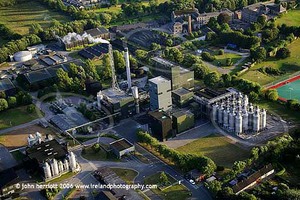
In 1866, John Power & Son began bottling their own whiskey, becoming one of the first distilleries in the world to do so. Until then, distilleries usually sold whiskey by the cask. A gold label adorned each bottle and it was from these that the whiskey got the name Powers Gold Label.
In 1791 James Power, an innkeeper from Dublin, established the John"s Lane Distillery at Thomas St., Dublin. Initially trading as James Power, at the turn of the 19th century James" son John joined the business, and the company became known as John Power & Son.
The Old Midleton boasted the world"s largest potstill, with a capacity of over 31,500 gallons.
The new Midleton is an enormous modern distillery in County Cork built by Irish Distillers in 1975 to streamline the production of its many brands. The trasfer of production between the distilleries was seamless: the distillery workers left the Old Midleton distillery in the evening and started at the new complex the following morning.
Irish Distillers was bought by Pernod Ricard in 1989. Bushmills was sold to Diageo in 2005.
The Midleton distillery"s flagship brand is Midleton Very Rare, which is a small batch blend released annually.
from Wikipedia & The Whisky Exchange
The Owner: Mitchell & Son
| Established: 1805 |
| Silent since: False |
| Address: 54 Glasthule Road, Sandycove, Co. Dublin, Ireland |
| → website |
"The business started with ladies supping port in its Grafton Street tearoom. Nearly 200 years later wine and spirits merchants Mitchell and Son is still owned by the same family."
During Sarah"s reign things went from good to better. Mitchells bought numbers 9 and 11 Grafton Street and, through what was Grafton Street"s coffee house heyday - with the street knee-deep in the likes of Bewleys, Fullers and Robt. Roberts - Mitchells, with its variety of restaurants, was the place to go.
The first Robert in the family, son of the remarkable Sarah and of Patrick Mitchell, took over the family company in time. In 1887, with the sale of wine making an ever-increasing contribution to the family business, he bought 21 Kildare Street from the then provost of TCD, John Hutchinson, and expanded into whiskey bonding and wines.
"The family business began as a confectionery and bakery in 1805 at 10 Grafton Street - where McDonalds is today," says Jonathan. "It was started by William Mitchell, my great-great-great grandfather, who was a baker and came from the north of England." "The company grew, supplying wedding cakes countrywide and opening tea and private dining rooms on different levels in the building."
Redoubtable women with remarkable names come and go through the Mitchell story. Sarah, who married George Patrick Mitchell, son of William, was one of them. She took over when her husband died, in 1847 at a far too young 32 years, and by 1850 and garnered the first of many royal warrants and became "Confectioner to her Majesty."
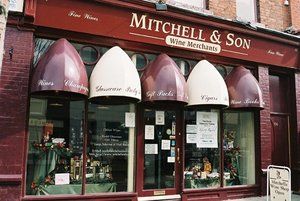
Mitchells, in the 1800s, was the Grafton Street place to go for tea, confectioneries and the odd sympathetic tipple. The last was a discreet extra, port served in teacups to the ladies-who-lunched of the time and who couldn"t be seen imbibing publicly. It was in those comforting sups that the seeds of Dublin"s most venerable wine merchants were nourished. Mitchell and Son moved in time from tea and cakes to whiskey and wine and, seven generations and a decisive resistance to takeovers and the multinational route later are nobility among the city"s wine merchant.
From 21 Kildare Street, the elegant, Georgian building the family bought in 1887, Mitchells has for several of those generations been selling fine wines, spirits and its own Green Spot whiskey. In 1918, it would have sold you a dozen bottles of St. Emilion for 32 shillings, white Claret by the dozen for 36 shillings or 12 bottles of John Jameson & Sons whiskey for 108 shillings. They would have paid the carriage to the railway stations too - and you wouldn"t have been charged for the bottles.
How Robert became a family name is a story in itself. "The first Robert was a great friend of Robert Emmet"s" Jonathan explains. "It"s said that on a visit to him in jail, he promised the the firstborn sons in succeeding generations of Mitchells would be called Robert - and that"s how it"s been."
R Jonathan Mitchell is managing Director and chairman of today"s company. He"s closely abetted by Peter Dunne, also a director, who joined the company in 1970. Robert Mitchell, son of Jonathan, manages the company"s other wine shop, opened in Glasthule, Co. Dublin in 1997.
Wine consumption in Ireland has grown steadily over the last 10 years, the same decade in which new world wine has come into serious prominence. Mitchells, however, was importing containers form Australia and Chile in the early 1970s. And Peter Dunne talks about the original emergence of these wines in 1560 as if it were yesterday. "The line between new and old world wine was drawn when Mexico started to grow and make wine, after Jesuit missionaries started bringing it in for alter wine. Nowadays, countries like Slovenia, in particular, will be interesting to watch, and Hungary, which has of course been producing wine for a very long time."
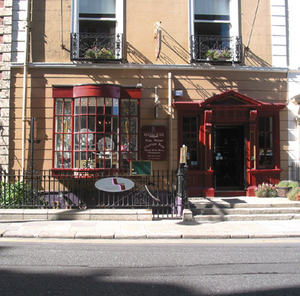
Mitchells believe in the personal touch and intends remaining a family business, dealing directly with chateau and vineyard owners who are their suppliers.
This article is its complete version appears in a book, published by New Island Books entitled "Trade Names," which is a compilation of articles by Rose Doyle, which have appeared in the Irish Times.
Jameson and Power were the big Dublin whiskey distillers when Mitchells went into the business of whiskey bonding in 1887. "Findlaters would have been around then," Jonathan says, "and Gilbeys. We had special whiskey cellars in Fitzwilliam Lane where we bottled our Green Spot whiskey and matured it for 10 years."
Green Spot, since the 1920s, has been a continuing success. Up there with Black Bush, it"s distilled, matured and bottled for Mitchells and, in 2003, won a gold medal in Best of the Best Whiskey Tasting run by the prestigious Whiskey Magazine.
Peter Dunne says he joined Mitchells "virtually from school. As Jonathan did, I learned things from the bottom up, picking grapes in France, bottling, going through the whole gamut. It"s a tough but lovely business to be in."
He"s full of interesting detail and explains some of the practical realities and latter day great changes in the business. "We imported wine in casks until 1978," he says, "and had a Heath Robinson-like machine which bottled gin, rum, sherry, port - all of which came in casks. People returned their bottles, or if they didn"t they were charged for them. We didn"t bottle everything, of course. At the very expensive end of the market, as with Chateau Margaux, they bottled their own. By the late 1970s and early 1980s, the EU was changing the laws appertaining to wine bottles almost by the hour until it reached a point where, along with other importers, we had to bring in wine already bottled in its country of origin."
from Mitchell & Son
The Owner: Irish Distillers
| Established: 1966 |
| Silent since: False |
| Address: Simmonscourt Hous, Simmonscourt Road, Ballsbridge, Dublin 4, Ireland |
| → website |
In 2005, Bushmills was sold to rival drinks giant Diageo for £200 million.
In July 1975 production ceased at the old Midleton distillery and began in the morning at the new Midleton complex. The old distillery has since reopened as a visitors" centre.
Following an early unsolicited takeover offer by GrandMet, Allied-Lyons and Guinness, Irish distillers was taken over by Pernod Ricard in June 1988.
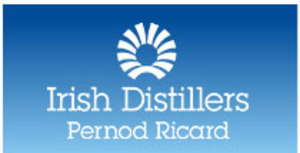
In an attempt to reverse the decline in Irish whiskey sales, the board of directors decided to close the existing distilleries in Cork and Dublin, and to consolidate production at a new purpose-built facility. A site alongside the existing distillery in Midleton, Co. Cork was chosen as the location for the new distillery, as there was no room for expansion in Dublin.
In 1972, Bushmills, the only other whiskey distillery in Ireland at the time, joined the group. This gave Irish Distillers control over all whiskey production on the island of Ireland.
Irish Distillers Group was formed in 1966, when a merger took place between Irish whiskey distillers John Power & Son, John Jameson & Son and the Cork Distillery Company.
from Wikipedia
The Owner: Pernod Ricard
| Established: 1975 |
| Silent since: False |
| Address: 12, place des Etats-Unis, 75783 Paris Cedex-16, France |
| → website |
HELLO WORLD!!! Pernod Ricard owns a wide variety of brands including: Chivas Regal, Glenlivet, Jameson Irish Whiskey, Seagram"s, Pernod absinthe, Absolut, Ricard pastis, Martell cognac, Jaconb"s Creek wine, pernod anise, Havana Club rum, Ballantine"s scotch, Kahlue, Malibu rum, Beefeater gun, Stolichnaya vodka, Mumm champagne and more.
Pernod Ricard came into existence when old rivals Pernod and Ricard merged to form Pernod Ricard S.A.. Ricard was founded 1932 in Marseille by Paul Ricard. Pernod started with Henri-Louis Pernod who opened his first absinthe distillery in Switzerland in 1797, followed by Maison Pernod Fils in Pontarlier. In 1926 these distilleries merged with Distillerie Hernard in Paris to form Les Etablissements Pernod.
After the 1975 merger that formed the current company a series of buy-ins and takeovers began that continues until this day. In 1988 PR acquired Irish Distillers which includes Jameson Irish Whiskeys, in 1989 PR acquired Orlando Wyndham (makers of Jacob"s Creek wine), in 2001 PR purchased 38% of Seagram"s Wines and Spirits, in 2005 PR purchased Allied Domecq and in 2008 PR bought V&S Group which includes the Absolut Vodka brand.
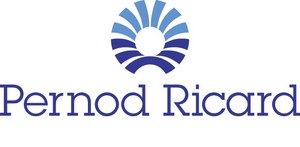
Reborn from the Pernod Fils company as a producer of anise liqueur following the ban on absinthe, it is now a worldwide conglomerate. It owns the alcoholic beverage division of the former Seagram corporation, among many other holdings. In 2005, the company acquired British-based international competitor Allied Domecq plc.
In 2008, Pernod Ricard announced the acquisition of Swedish-based V&S Group including Absolut Vodka.
Pernod Ricard (Euronext: RI) is a French company that produces alcoholic beverages. The company"s most famous products, Pernod Anise and Ricard Pastis, are both anise liqueurs, and often referred to as simply Pernod or Ricard. The company also produces several other types of pastis.
from Wikipedia
